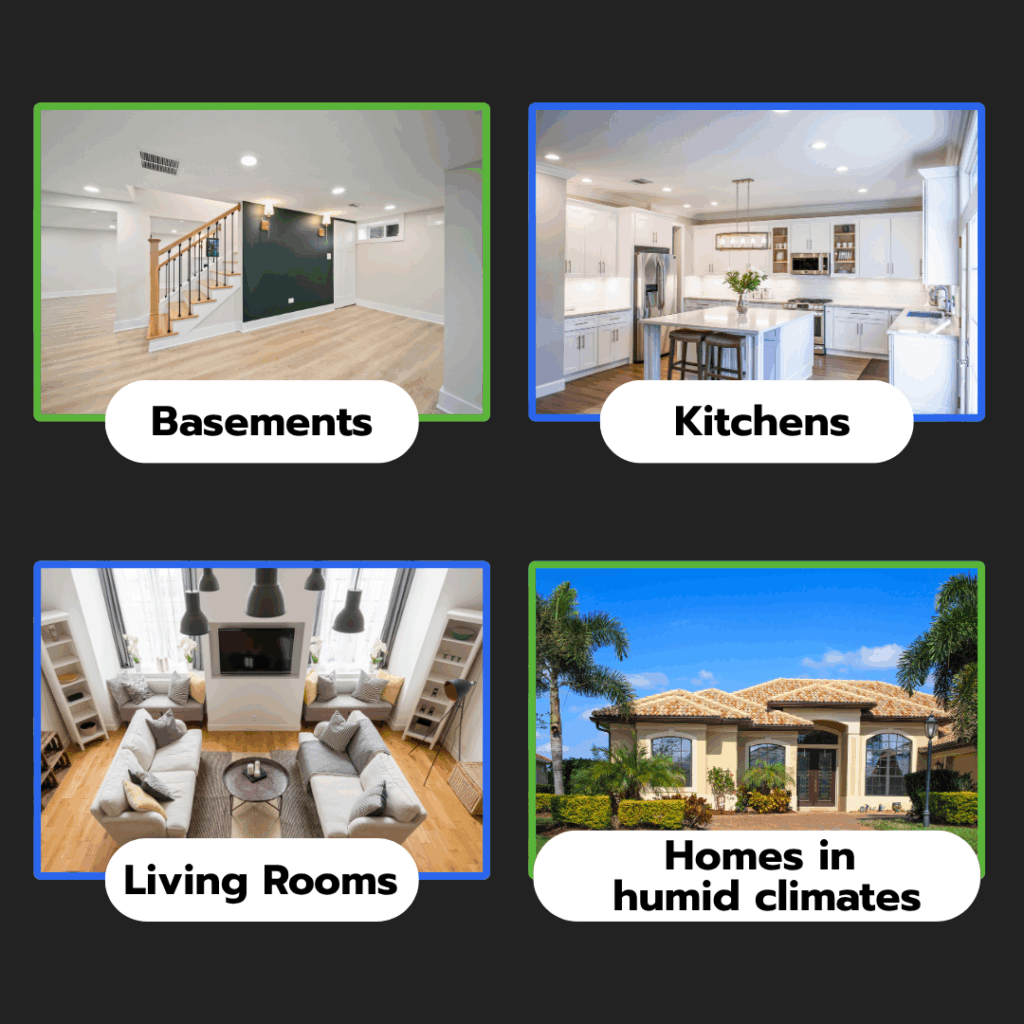Choosing the right flooring for your home can feel overwhelming. If you’re torn between hardwood, laminate, or something in between, engineered flooring might be the option you’ve been looking for.
So, what is engineered flooring exactly? It looks like hardwood, acts like hardwood, but offers more flexibility when it comes to cost and installation. In this post, we’ll break it all down so you can decide if it’s the right fit for your home.
What is Engineered Flooring?
Engineered flooring is made of multiple layers. The top layer is real hardwood, while the bottom layers are made of plywood or high-density fiberboard. These layers are glued together in a crisscross pattern to create stability and reduce shifting.
Unlike laminate, which has a photo layer that mimics wood, engineered flooring has a real wood surface. That gives you the natural look you want with a little more durability and flexibility underneath.
Where Is It Most Commonly Used?
Engineered flooring is popular in places where solid hardwood struggles. It works well in:
- Basements
- Kitchens
- Living rooms
- Homes in humid climates
Because of its moisture resistance, many homeowners choose it for ground-level floors or areas near water. If you’re selling or buying a home, it’s a smart choice that adds style without the worry of warping.

Pros of Engineered Flooring
1. Real Wood Look Without the Price Tag
Engineered flooring gives you the classic hardwood look, but it usually costs less. On average, installed costs range from $4 to $13 per square foot, depending on wood species and thickness. By comparison, solid hardwood can run up to $23 per square foot.
2. Better Moisture Resistance
Because of its layered core, engineered flooring is less likely to expand or contract when the weather changes. It’s more stable than solid wood in places with shifting temperatures or humidity.
3. Flexible Installation
You can install engineered flooring in more ways than traditional hardwood. Some options allow you to float it over a subfloor, glue it down, or staple it. This makes it a great option for DIYers or fast renovations.
4. Eco-Friendly Choice
Engineered flooring uses less slow-growing hardwood. The core layers are often made from fast-growing trees, making it a more sustainable option than using solid hardwood throughout.
5. Adds Value to a Home
It’s not just about looks. Homebuyers tend to favor real wood surfaces, and engineered flooring can offer a good return on investment, especially when installed in main living areas.
Cons of Engineered Flooring
1. Limited Refinishing
Unlike solid hardwood, you can only refinish engineered flooring if the top wood layer is thick enough. Some budget options can’t be refinished at all.
2. Not Waterproof
It handles moisture better than solid wood, but it’s not waterproof. Spills should be cleaned up quickly to avoid damage or mold.
3. Quality Varies
There’s a wide range of quality on the market. Cheaper products might have thin wear layers, lower durability, and may wear out faster.
4. Less Long-Term Value in High-End Homes
While it looks great and performs well, high-end buyers may still favor solid hardwood for prestige or resale value in luxury homes.
How Long Does Engineered Flooring Last?
With proper care, engineered flooring can last 20 to 30 years or more. The exact lifespan depends on the thickness of the top layer, the type of wood, and how well it’s maintained.
Care tips:
- Use felt pads under furniture
- Sweep regularly to avoid scratches
- Avoid using wet mops
- Keep humidity levels balanced
Installing flooring over an uneven or damp subfloor can shorten its life, which is why many homeowners get a professional inspection before replacing flooring, especially in older homes.
Recommended Maintenance for Engineered Flooring
Engineered flooring is built to last, but like any surface in your home, it needs regular care. Following a few simple steps can help preserve its appearance and lifespan.
1. Clean Regularly, but Gently
Sweep or vacuum using a soft brush attachment to keep dirt and grit from scratching the surface. Avoid wet mops or steam cleaners, which can damage the top layer over time.
2. Use the Right Products
Stick to floor cleaners that are labeled safe for engineered wood. Harsh chemicals or all-purpose cleaners can dull the finish or cause buildup.
3. Protect High-Traffic Areas
Place rugs or mats at entryways and under furniture. Use felt pads on chair and table legs to prevent scratches.
4. Control Indoor Humidity
Engineered floors handle moisture better than solid wood, but they still prefer stable conditions. Aim to keep your home’s humidity between 30% and 50% to prevent the boards from expanding or shrinking.
5. Wipe Up Spills Right Away
Even though the core layers add some moisture resistance, standing water can still cause warping or mold growth if left too long.
6. Watch for Wear and Tear
Some engineered floors can be lightly sanded and refinished once or twice, depending on the thickness of the top layer. Check with the manufacturer before attempting this step.
Regular maintenance not only keeps your floors looking great but can also help spot early signs of moisture problems, which can lead to hidden damage. That’s where home inspections come in handy.
Final Thoughts
When asking what is engineered flooring, it’s about more than just materials. It’s about how it fits into your lifestyle, your budget, and the condition of your home.
Engineered flooring can be a smart upgrade, but like any home change, it helps to know what you’re working with underneath. Moisture problems, uneven subfloors, or hidden damage can all affect how well your new flooring performs.
Before you start your flooring project, consider a professional home inspection, especially if you’re noticing moisture, musty smells, or uneven surfaces. Catching those issues early can save money and headaches later.
Need help checking your subfloor or humidity levels? Our licensed inspectors are here to help you make the best choice for your home’s health and safety.
